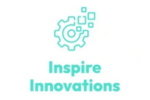Request for Proposals (RFP) are the foundation for building the right partnerships in public sector technology projects. When it comes to IT staffing support, clarity and specificity are everything. Agencies that define their needs with precision not only attract better responses, but also save time, reduce misalignment, and improve the quality of delivery. This guide breaks down the key elements your RFP should include when you’re looking for external support in IT consulting, technical roles, or long-term staff augmentation.
Before listing qualifications or timelines, provide context. Explain why the IT staffing support is needed – whether it’s to backfill critical roles, scale up for a new system rollout, or provide specialized expertise for a short-term initiative. Include information about your agency or department’s function, existing systems, and any relevant regulations or procurement restraints. This helps potential vendors assess early, which reduces irrelevant proposals.
General language like “technical support” or “IT staff” won’t produce targeted responses. Define the specific positions you need – such as systems analyst, network engineer, help desk support, or project manager. Include the expected skill level (junior, mid-level, senior), required certifications, and relevant platforms or tools. For example, if your agency relies on Microsoft Azure, make that clear.
This section is essential for firms offering IT staff augmentation for public sector projects, as it helps them match the right talent to your environment.
Outline the expected start date, project duration, and the weekly time commitment for each role. If the contract may be extended, note that too. Transparency here allows MWBE certified tech firms to plan appropriately and avoid overpromising.
Clarify whether roles will be fully remote, hybrid, or on-site. If on-site work is required, include the location, work hours, and any security clearance procedures. This is a key detail for both pricing and staffing logistics.
List any benchmarks or outcomes tied to the staffing support. For example, you might expect the project manager to deliver biweekly reports or help desk staff to meet a response time standard. Including performance metrics upfront sets the tone for accountability. When these expectations are clearly defined in the RFP, they can also be integrated into service-level agreements (SLAs), making them enforceable once the contract is awarded.
Include any certifications or requirements required for participation. If your agency prioritizes working with MWBE tech partners, veteran-owned businesses, or suppliers listed on WEBS, MRSC, or King County directories, be specific. Clear eligibility criteria allow vendors to tailor their proposals, preventing unnecessary back-and-forth during the review process.
State the due date, preferred format (PDF, portal submission, etc.), and a point of contact for questions. If your process includes a pre-proposal Q&A period or vendor briefing, outline the timeline and expectations early. A clear structure shows that your agency is organized and ready to work with partners who value the same.
A well-developed RFP sets the tone for the entire staffing engagement. It is a strategic tool that allows your agency to attract the right IT staffing support, especially in time-sensitive or resource-constrained environments. The more specific and transparent you are, the more likely you are to find a tech partner who can step in smoothly and begin contributing immediately.
If you’re building an RFP and want insight from a vendor’s perspective, Inspire Innovations is available to share feedback based on years of experience responding to public sector staffing requests.
